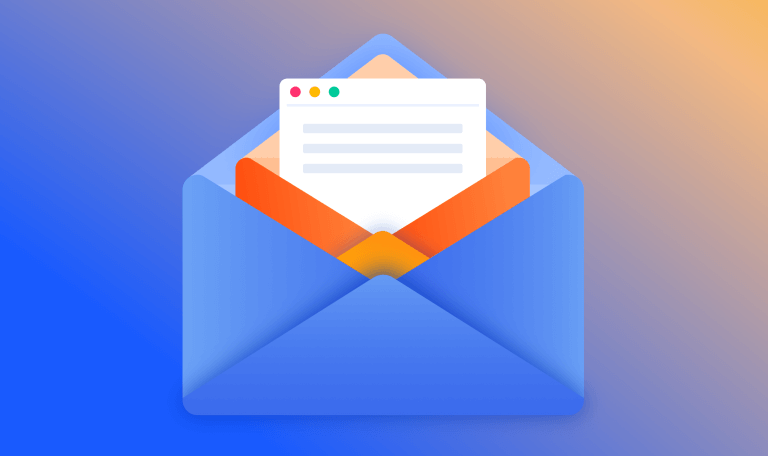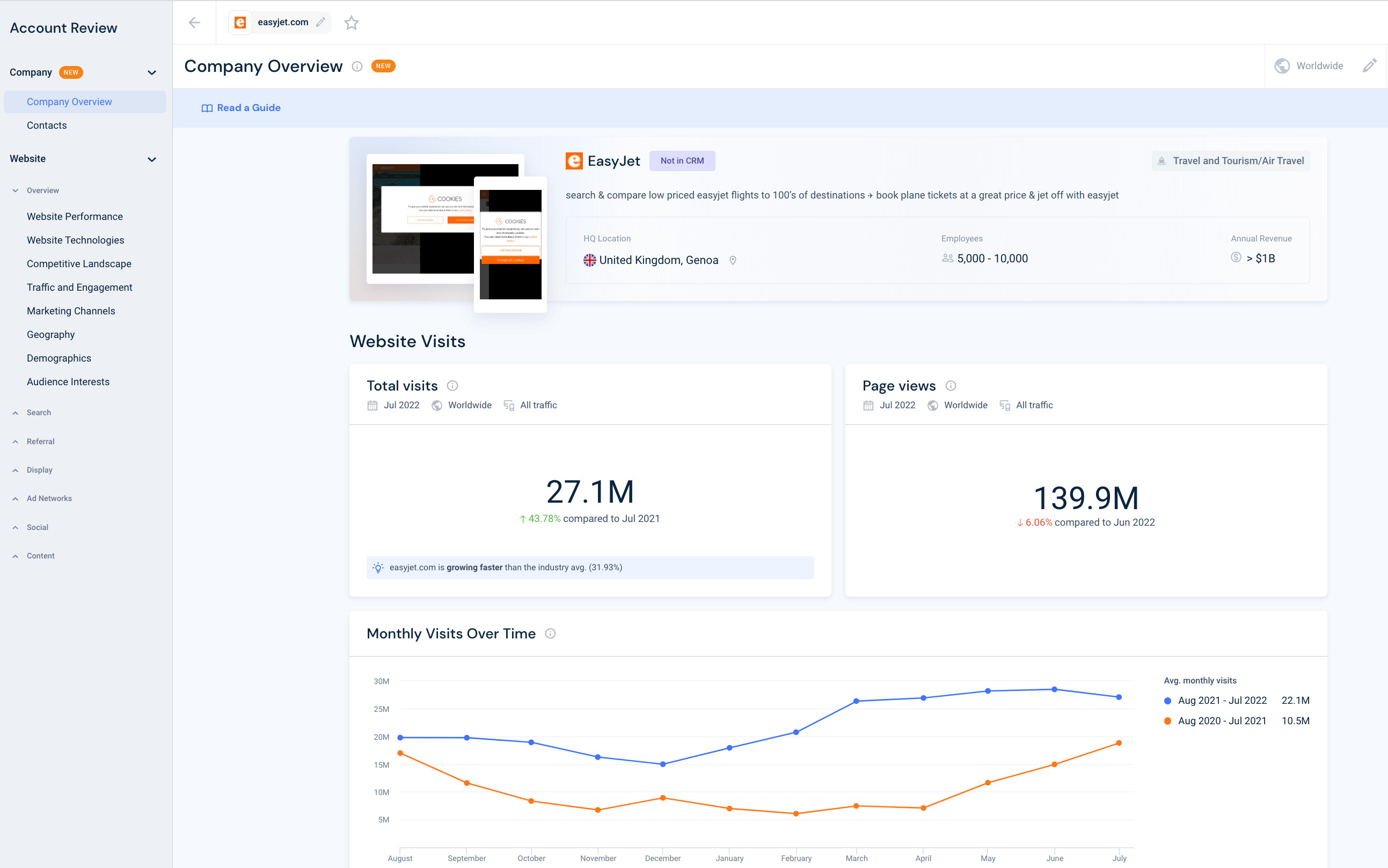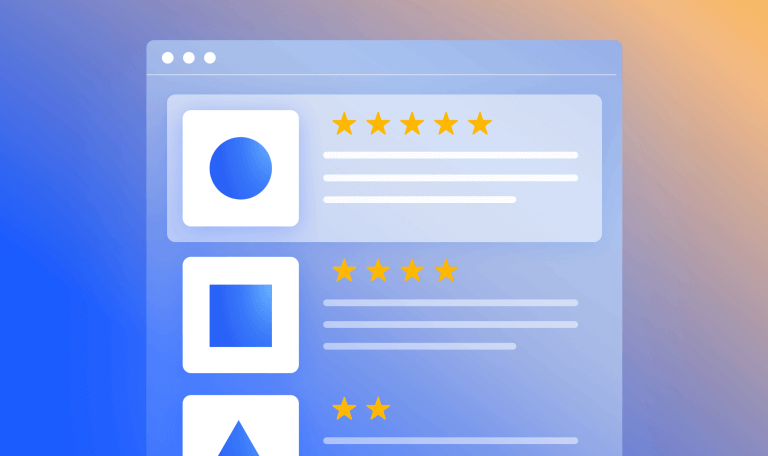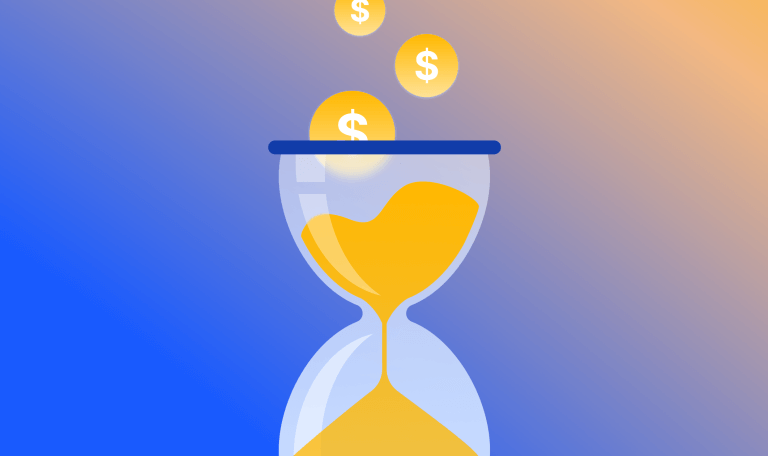The Ultimate Guide to Writing A Sales Follow-Up Email

There’s an art to perfecting your sales follow-up email, with potentially hours going into crafting the perfect message, A/B testing different templates, adhering to best practices, and trying out new tactics.
There’s a good reason why you and your colleagues should care about getting that sales follow-up email. They serve an essential function in the sales process, helping to keep up the momentum in between calls. A little nudge for your prospect to move down the funnel, and next stop: a paying customer.
However, all of that is only true if your prospects actually open and read your emails. Unfortunately, the average open rate for sales emails is at a slightly sad-looking 17%. That means 83% of sales emails are getting ignored.
And that’s exactly why writing a sales follow-up email (that actually generates a response) is one of sales reps’ biggest challenges.
In this post, we’ll cover everything you need to know to write an email that your prospects will actually open, read, and reply to. That’s right, all the best tips, tricks, and templates for sales follow-up emails are coming your way.
8 tips for writing the best follow-up emails for sales
When it comes to writing sales follow-up emails, a few simple tweaks can make a big difference in the eyes of your prospect. Check out these eight tips for writing the best follow-up emails for sales.
1) Keep it short
Consider this: If you wouldn’t sit down to read it, don’t send it. Keep those sales follow-up emails as short as possible.
According to HubSpot, which analyzed 40 million emails, the optimal length of a sales email is between 50 and 125 words. Boiling down your message into a short, concise message is no easy feat, and it might need practice, multiple drafts, and ample pruning. But hey, if you want your prospects to actually read and reply, it’s necessary.
2) Make replying simple
By providing quick response options, you’ll encourage your email recipients to reply now instead of later, because you’ve made the act of responding so fast and convenient for them.
Imagine the goal of your sales follow-up email is to touch base after a demo. Instead of requesting that the recipient gets back to you soon, you can offer them a series of quick-reply options.
I know you’re busy, so no need to write a full message back. Feel free to reply with just a number, and I’ll know how to take it from there:
1 = I want to move forward and talk details. Let’s schedule another conversation.
2 = I’m interested in your product, but not at this time. Email me in six months.
3 = After seeing your demo, I don’t think your product is for us.
3) Cadence is key
The best sales follow-up emails don’t just say the right things – they also arrive at the right time.
Here is a rough guide for when to follow up with prospects in general:
- Send a follow-up email within 24 hours:
- After a meeting and you need to confirm next steps
- When you’re thanking the prospect for something
- Wait at least 48 hours:
- If you want to follow up on an email that they didn’t answer
- You provided them with materials and they didn’t confirm receipt
- You’ve agreed to schedule a next call, but they haven’t yet confirmed a time
- Wait at least three weeks:
- If you’ve sent them five emails with no reply
There’s a thin line between being persistent and being spammy. By sticking to the recommended cadence above, you can boost your chances of staying at the top of prospects’ inboxes (and hopefully, minds) without bugging them.
4) Acknowledge that sometimes you’re a little annoying
In a world where we are all flooded with ads and marketing content, it’s understandable why sometimes emails from salespeople can be seen as annoying or pushy. It’s okay to acknowledge that your follow-ups might come off as a little bit relentless.
Hi [Name],
I hate to be that annoying sales guy, but I don’t want to move on without hearing from you because my messages might have gotten buried in your inbox.
A comment like this is sure to ease any tension that might exist (and probably reduce the number of screenshots of your email shared around on Slack for being “that guy”).
5) Offer real value
Sales follow-up emails are amazing opportunities to provide content, information, or data that offers real value to your prospects. After all, if you want to convince your prospects to convert, you’ll need to prove that you have something valuable to offer.
Imagine that during your intro call with a prospect, they mentioned that one of their biggest challenges today is providing a distinctive customer experience. This would be your opportunity to offer real value. When you write a follow-up email to thank them for the call, send along your company’s latest eBook or webinar on how to improve the customer experience.
You can also provide real value in the form of:
- Information on the prospect’s top competitors
- Data on the adoption of new technology or trends in their market
- Connections with analysts, consultants, or other experts that can offer advice
- Articles, podcasts, blog posts, or other content that touches on topics you previously discussed
The best follow-up emails in sales take advantage of every opportunity to provide value and support.
6) Make it about them
To make sure you come across as genuinely motivated to help your prospect succeed, use language that focuses on the prospect more than yourself.
The easiest way to do this is to say “you” and “your” more than “I” and “mine.” The words you choose can make a powerful impact on how your intentions are perceived. By putting the prospect at the center of everything, you will automatically seem more authentic and genuine.
7) Use social proof
One of the best ways to prove your product or service will benefit your prospect is by providing examples of how it’s already helped other companies. Plugging some case studies, quotes, or testimonials into your sales follow-up emails can work wonders.
Imagine your company sells customer support software. Here, you could include a case study in one of your follow-up emails that shows how a customer of yours was able to improve their customer support rating by 70% after implementing your software. They also were able to respond to 50% more customers, and customer support staff reported they felt twice as productive at work.
With compelling figures and testimonials like these, you can generate stronger motivation and belief in your prospect that they need your product as well.
8) Break up when it’s over
If a prospect consistently ignores your emails, it may be time to press pause on following up with them and instead direct your efforts at more tenable leads.
But breaking up with a prospect doesn’t mean completely disappearing. Keep ghosting in the world of dating, please.
Instead, it’s always worth sending one final “goodbye” email so you end on a good note. And sometimes, when it becomes clear you’re done chasing the prospect, they will decide they’re ready to talk.
Subject lines: The first step to a good follow-up email for sales
The modern employee receives 120 new emails every single day. They are flooded with mail from colleagues, managers, calendar reminders, newsletter subscriptions, and lots of spam — not to mention emails from the sales reps you’re competing with.
Here are some examples of effective sales follow-up email subject lines for five different use cases:
1) After the intro call
Following up after an intro call is standard practice. But since prospects expect this email, they may think they already know what’s inside and don’t need to open it.
Here’s where a compelling subject line saves the day, again.
Objectives:
- Thank them for their time
- Schedule another meeting
- Send them an article, podcast, or report they might find interesting
Subject line examples:
- Thanks for your time! Here’s the agenda for our next call
- Here’s the information I promised you
- Our next steps + interesting podcast you’ll love
2) After a trigger event
A trigger event is a great reason to send a sales follow-up email, and could motivate a usually unresponsive lead to reply. Common examples of trigger events include:
- The prospect was promoted or changed jobs
- Their company named a new executive
- Their company announced a strategic partnership, merger, or acquisition
- Their company is relocating
- Their company just posted a particularly good (or bad) quarter
- Their industry is undergoing a major change or trend
- Their company just won an award
Objectives:
- Remind the prospect that you’re still here
- Foster a sense of urgency around the deal
- Give the prospect a chance to talk (especially if the trigger event is their promotion or another personal experience)
Subject line examples:
- Congrats on [your promotion]!
- Question about [your new partnership]
- X thoughts on [industry trend]
3) After a review with decision makers
Sometimes your prospect will be responsible for all the comms with you, but still need permission from a superior before signing a contract. When multiple stakeholders are involved, deals can quickly get dragged out.
Let’s look at what you can put in a follow-up email for sales, to help push things along.
Objectives:
- Remind them to talk to their superiors
- Understand how you will move forward
Subject line examples:
- Let’s talk about next steps
- Time to touch base this week?
- Meeting invite: [date]
4) When they don’t answer
If a prospect hasn’t answered your last couple of emails, you’ll want to try reaching out once more with the hope of getting their attention.
Objectives
- Put the ball back in their court
- Create intrigue
Subject line examples:
- [Name], I miss you!
- Exciting update for you!
- Thought you’d be interested in this
5) The breakup
If your prospect has effectively ghosted you, it’s time to gracefully say goodbye.
Objectives:
- Let them know you won’t be reaching out any more
- Invite them to get in touch in the future
- One last effort in getting them to respond
Subject line examples:
- Permission to close your file?
- I won’t be bugging you anymore
- My door is always open
Top sales follow-up email templates
So, we’ve got sales follow-up email tips and we’ve got subject lines. But what about the content itself?. That’s why we’re also including some sales follow-up email templates. We treat you well, don’t we?
With these templates, you can simply tweak and customize pre-written messages so you can quickly and confidently contact your prospects and save hours on drafting emails.
Here are 10 templates that cover each of the use cases we discussed in the section above:
1) After the intro call
Hi [Name],
I enjoyed our call! I hope you found it interesting too. What’s our next step? Would you like to schedule another meeting?
In the meantime, check out this fascinating article. I think it’s right up your alley.
Or:
Hi [Name],
Thanks for a great call. After hearing you discuss [topic], I did some digging and found some interesting stats on how some of your main competitors are tackling this issue. [Insert a few interesting statistics]
On another note, what are reasonable next steps for you? Looking forward to catching up soon.
2) After a trigger event
Hi [Name],
I just saw on LinkedIn that you were promoted! That’s fantastic and much-deserved. I’m sure you’re super busy having just started a new role, but I’d love to catch up and hear about what you’re doing now, and discuss our next steps.
Congrats again!
Or:
Hi [Name],
This morning I read that [prospect’s company] and [another company] are [partnering, merging, acquiring, etc]. Fascinating development. What are your thoughts on this move? How do you see it impacting [previously discussed goal]?
I’d be interested to catch up and discuss how we can move forward. I think [your company] could be a great asset to you given the [partnership, merger, etc].
3) After a review with decision makers
Hi [Name],
How did your talk with [boss/executive] go? I’m interested to hear the outcome, and what our next steps are. Do you have time for a 15-minute phone call this week?
Or:
Hi [Name],
I’m excited to hear how your meeting with [boss/executive] went. In the meantime, I just pulled these numbers on how much more revenue you could make by expanding your services to [certain regions].
By the way, if there are any other stats you’re interested in, let me know and I can get those to you ASAP!
4) When they don’t answer
Hi [Name],
Have you seen this article in [publication name]? I read it today and thought of you.
It’s a super busy time of year, so no need to respond. I just wanted to check in and see if you’d like to catch up and discuss next steps. Feel free to send a quick number reply back, and I’ll take it from there.
- I’d like to catch up, please propose some meeting times.
- I’m interested but too busy—check in next month.
- I’m no longer interested, please stop bugging me!
Or:
Hi [Name],
It’s been a while since we caught up. Just wanted to check in and see how we can move forward?
By the way, I thought you’d find this report interesting. It’s all about [topic], which we talked about on our last call.
5) The breakup
Hi [Name],
I’m getting the signal that you’re no longer interested in [your company], so I’ll stop emailing you.
It’s been great getting to know you, and I wish you all the luck going forward. My door is always open if you change your mind. Do I have permission to close your file?
Or:
Hi [Name],
I’ve tried reaching out to you several times but haven’t heard back. I’m starting to worry! Let me know which one of these is the reason, so I know what to do next.
- I’m still interested, just super busy these days. Check back in a few months.
- No longer interested—please close my file.
3 tools that simplify the follow-up process
In addition to templates and ideas that help you craft the best follow-up email for sales, there are a few tools that can help simplify the process:
1) Sales Intelligence tool
Similarweb’s Sales Intelligence solution is an invaluable tool for creating sales follow-up emails. The platform houses data on more than 100 million websites, giving you full digital visibility into every part of a prospect’s digital strategy and performance. With access to these insights, you will be able to understand what matters to your prospects, as well as when and how to engage with them.
Instead of spending time searching for an interesting statistic or fact to send them, the Sales Intelligence solution allows you to instantly pinpoint relevant and compelling stats you can include in your emails. Not only will you attract your prospects’ interest, but you will provide real value they can act on.
2) Email tracking tools
Tools that help you keep track of your emails and alert you when a prospect has opened it are super helpful when managing sales follow-up emails.
Some tools allow you to distinguish between prospects who read your emails but didn’t reply, and those that never even opened them. This kind of insight will give you a better idea of how to most effectively follow up.
Some of the best email tracking tools out there that we love:
3) Meeting schedulers
Scheduling meetings the old fashioned way is all well and good, but when you have dozens or hundreds of prospects to follow up with, you might want something that makes the task of finding and confirming meetings a little bit faster.
There are many meeting scheduling softwares out there that help reduce the number of emails you need to send, sync with your calendar, and send you reminders of upcoming meetings.
Here are our top recommendations:
Don’t sweat the sales follow-up email
Writing and managing sales follow-up emails doesn’t need to be stressful or overwhelming. Luckily, no one expects you to write long, detailed essays. Short, value-driven emails do the trick. When you get them right, you’ll be better positioned to nurture your prospects and drive conversion.
With customizable sales follow-up templates, tips, subject line ideas, and a suite of email tools, you have everything you need to write the best follow up emails for sales.
Boost your consultative selling impact
Try Similarweb Sales Intelligence today — free of charge








